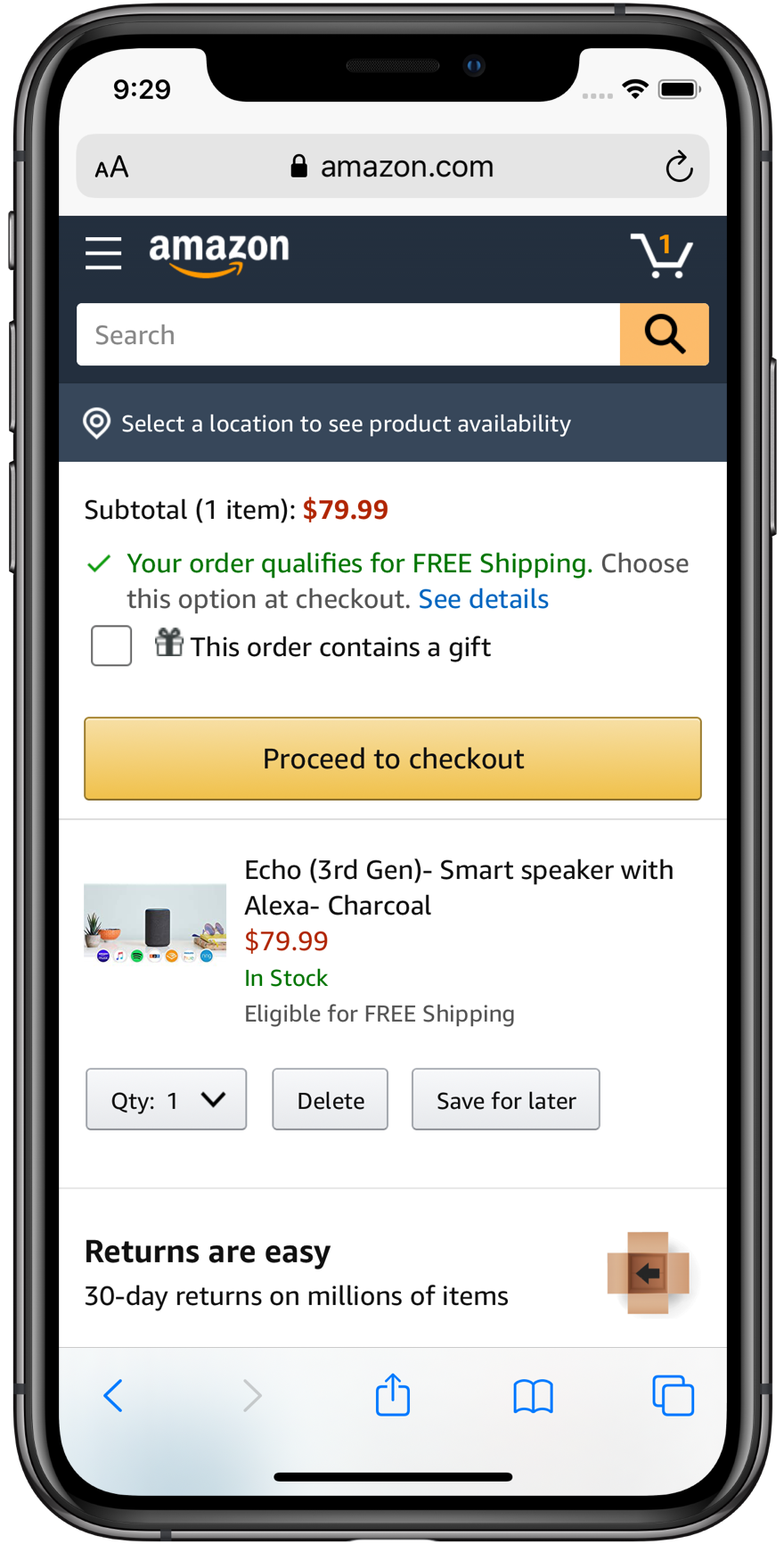Case Study



Customers had difficulty interacting with dropdowns during usability testing. After observing this, I designed and developed a prototype that replaced the dropdown with an input stepper. I conducted another round of user research to evaluate its effectiveness.
During usability testing I would give each customer an activity to complete - for example:
After the customer completed each activity I would give them a questionnaire with three questions:
Each question had a seven-point Likert scale:

The activity questionnaire
The prototype input stepper scored higher than the existing dropdowns during usability testing.

The prototype scored more positively across the board
Here's Fabric customer Angie's reaction:
"Oh nice. Yeah, I like that. I like just the plus...and then if I, 'oh no, I only need two yards', just subtract. That's really good. Much easier than before. Great. I like that. I love it. It’s a lot easier than doing the little half...scroll down."
Amazon was using a quantity dropdown, and I wanted to share the positive results of the input stepper from the Fabric channel with the Amazon channel.

Amazon's quantity dropdown
At this point in my career at Amazon I was a UX Design Manager and an active member of Amazon's UX community. I discovered Amazon Sky, which is a way for Amazon designers to share ideas - like Dribbble but only for Amazon employees. Amazon Sky receives dozens of design submissions each year, and only a few are selected for testing and potentially going live to Amazon customers. I submitted the input stepper design, data, and positive customer feedback on Amazon Sky.
The input stepper design was accepted and implemented into an Amazon Weblab - Amazon's A/B testing platform. Amazon runs dozens of Weblabs every day, implementing changes to the website for a small percentage of customers and evaluating their effectiveness. The input stepper WebLab had a 9% conversion rate increase (3% is considered highly successful at Amazon), and went live on the Amazon website and mobile app on May 19, 2019.

The input stepper design is live on the Amazon website and mobile app checkout

Tap plus to increment the quantity, or tap minus to decrement the quantity or delete the product
In the input stepper's first full year online, 2020, Amazon recorded $24 billion in revenue, up 73 percent from the $14 billion in 2019. As more customers shopped at Amazon because of the pandemic, it's nice to know that one small part of their experience, as Angie said, is “much easier than before.”